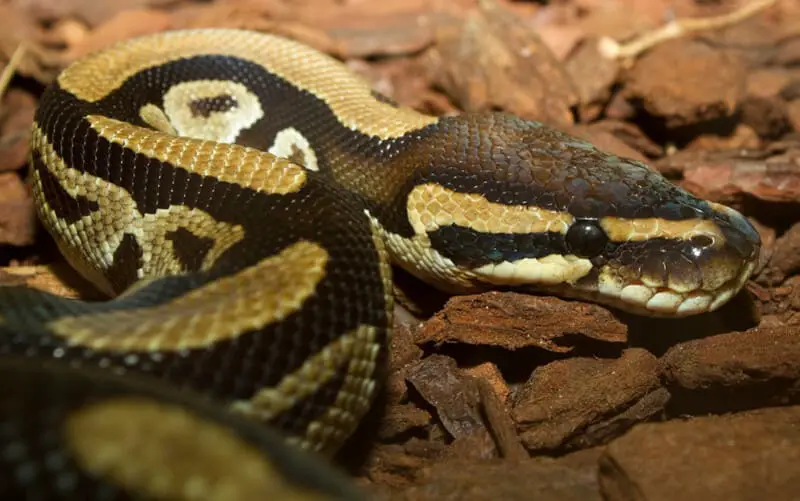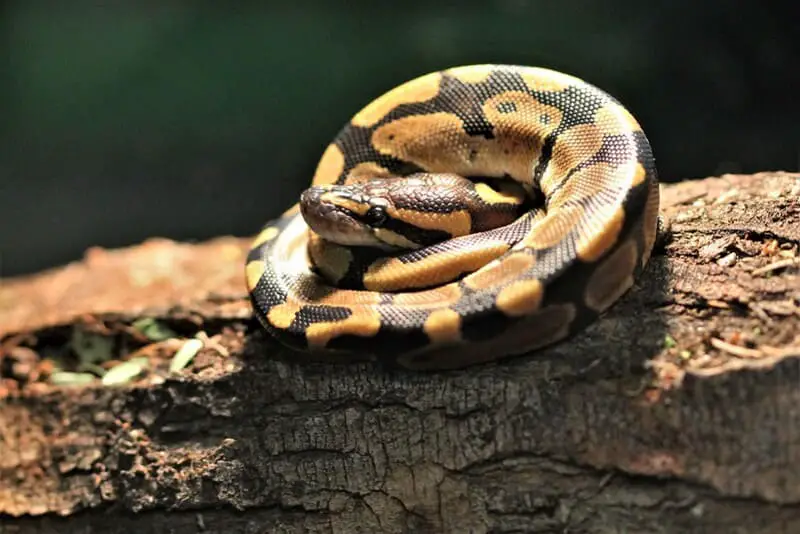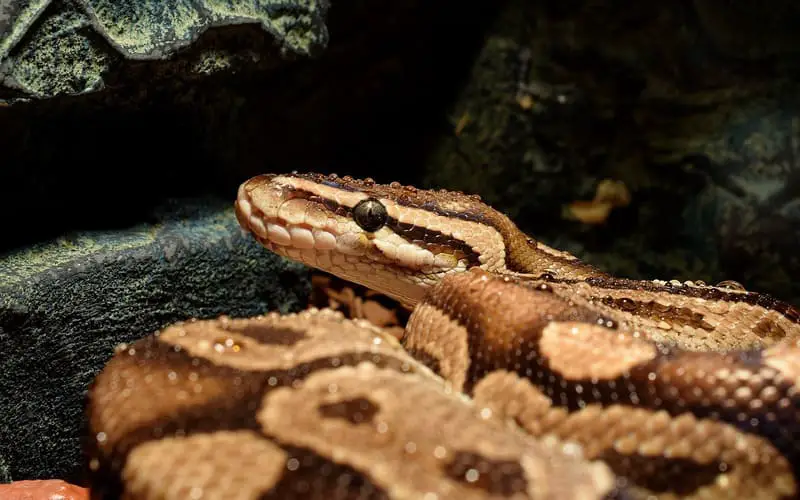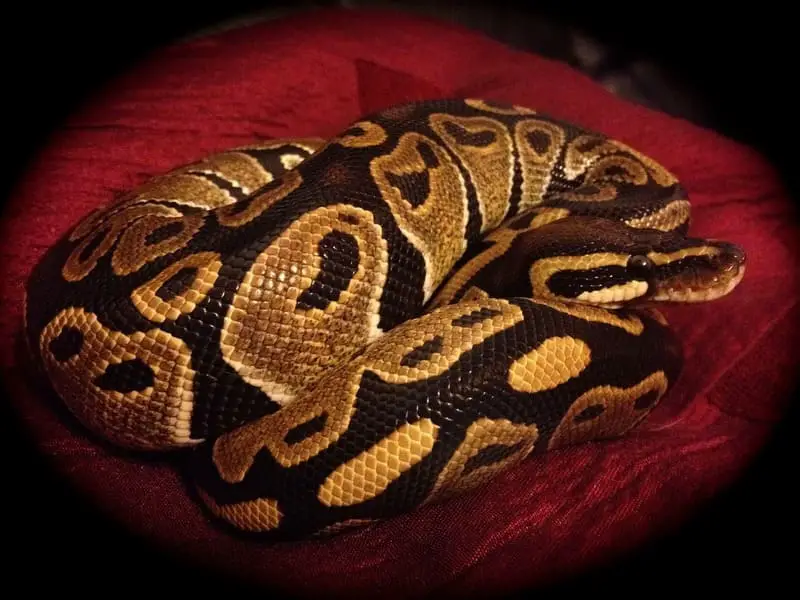Ball pythons, scientifically known as Python regius, are one of the most popular snake species kept as pets worldwide. They are known for their docile nature, manageable size, and distinctive appearance, which includes a beautiful pattern of colors and markings. To truly appreciate these captivating reptiles, it’s essential to understand their natural history, habitat, and the regions from which they originate. In this comprehensive exploration, we will delve into the origins of ball pythons, their native habitat, and the factors contributing to their global popularity in the pet trade.

Taxonomy and Classification
Before we discuss the origins of ball pythons, it’s helpful to establish their taxonomic classification within the animal kingdom.
- Kingdom: Animalia (Animals)
- Phylum: Chordata (Chordates)
- Class: Reptilia (Reptiles)
- Order: Squamata (Squamate Reptiles)
- Suborder: Serpentes (Snakes)
- Family: Pythonidae (Pythons)
- Genus: Python
- Species: Python regius
Ball pythons belong to the family Pythonidae, which is known for its non-venomous, constrictor snakes. Within the Python genus, Python regius is a distinct species, also commonly referred to as the royal python. Its scientific name, Python regius, is derived from the Latin word “regius,” meaning royal, highlighting the species’ regal appearance.
Native Range and Distribution
The natural range of ball pythons is found in West and West-Central Africa, encompassing several countries within this region. These countries include:
- Benin: Ball pythons are found in various parts of Benin, particularly in the southern and central regions. The country’s diverse landscapes provide suitable habitats for this species.
- Togo: In Togo, ball pythons are present in a range of environments, from forests to savannas, which make up their native habitat.
- Ghana: Ball pythons are native to the southern, central, and western parts of Ghana. The country’s tropical climate and varied ecosystems offer ideal conditions for their survival.
- Ivory Coast (Côte d’Ivoire): Ivory Coast is home to ball pythons across its southern and central regions. This diverse habitat encompasses rainforests, grasslands, and more.
- Liberia: Ball pythons are found in Liberia, primarily in the western and central parts of the country. These regions feature tropical rainforests, which provide essential cover and resources for the species.
- Sierra Leone: In Sierra Leone, the distribution of ball pythons extends through various ecological zones, including the forested areas of the country.
- Guinea: Ball pythons are native to Guinea and can be found across a range of landscapes, from forests to savannas.
- Senegal: Although Senegal is situated to the northwest of the other countries in the ball python’s native range, it still plays a part in their distribution.
The specific distribution of ball pythons within these countries is not uniform. Their range is influenced by factors such as local climate, available prey species, and suitable shelter.
Habitat and Ecology
Ball pythons are adaptable snakes, which is one reason for their widespread distribution within West and West-Central Africa. They occupy a variety of habitats, reflecting their ability to thrive in diverse environments. Some of the key habitats they inhabit include:
- Savannas: Ball pythons are known to inhabit savanna landscapes, which consist of grasslands and scattered trees. The open areas provide opportunities for both hunting and finding mates.
- Forest Edges: The species is often found at the edges of tropical rainforests. These areas offer a combination of cover and access to prey species, making them ideal hunting grounds for ball pythons.
- Agricultural Areas: Ball pythons can sometimes be found in and around agricultural fields. However, their presence in such areas can lead to conflicts with human activities.
- Termite Mounds: Termite mounds are known to serve as shelter for ball pythons. These structures provide protection from predators and a place to lay eggs.
- Underground Burrows: Ball pythons are known to utilize underground burrows, often those created by other animals, for shelter and as a place to escape extreme weather conditions.

Physical Characteristics
Understanding the physical characteristics of ball pythons is crucial for recognizing them in their native habitat and appreciating their appeal as pets. Here are some of their defining features:
Size and Shape
Ball pythons are relatively small snakes, with adults typically ranging from 2 to 5 feet in length. While exceptions exist, most ball pythons are slender and have a cylindrical body shape. Their smaller size and manageable weight make them a preferred choice for snake enthusiasts and pet owners.
Coloration and Pattern
One of the most distinctive features of ball pythons is their striking coloration and pattern. They have a background color that can vary from light tan to deep brown, and their bodies are adorned with a series of irregular, dark brown to black blotches or stripes. Their head is usually marked with an intricate pattern of lighter and darker scales.
The name “ball python” is derived from one of their defense mechanisms when threatened. These snakes often curl into a ball, hiding their head in the center, with the rest of their body coiled around to protect themselves. This behavior makes them resemble a ball, hence the name.
Ventral Scales
Ball pythons have smooth ventral scales, which run the length of their undersides. These scales are lighter in color than their dorsal scales and play a role in the snake’s locomotion and sensory perception.
Heat-Sensing Pits
Like all pythons, ball pythons possess heat-sensing pits located on either side of their head, just below and slightly behind the nostrils. These pits allow them to detect heat radiated by warm-blooded prey, helping in locating and striking their targets accurately.
Eyes
Ball pythons have clear, round pupils. This distinguishes them from venomous snakes, which often have elliptical (cat-like) pupils.
Tail
Their tails are short and taper to a point, which contrasts with some other snake species with longer tails.

Behavior and Reproduction
Understanding the behavior and reproductive characteristics of ball pythons is essential for appreciating their survival strategies and the challenges they face in the wild.
Nocturnal
Ball pythons are primarily nocturnal, which means they are most active during the night. This behavior helps them avoid daytime predators and locate their prey, which is also often active at night.
Solitary
Ball pythons are generally solitary animals, and they do not typically form social groups. They are known for their solitary lifestyle and prefer to have their own territory.
Feeding Habits
As constrictor snakes, ball pythons capture their prey by striking and then coiling their bodies around the victim, suffocating it. Their diet consists of small mammals, birds, and occasionally, reptiles. In the wild, they primarily feed on rodents, such as mice and rats.
Reproduction
Ball pythons are oviparous, meaning they lay eggs. The mating season usually occurs during the dry season, with females laying clutches of eggs, which are then incubated through various means, such as in termite mounds. This ensures that the eggs remain at a stable temperature and humidity level.
Conservation Status
In their native range, ball pythons face several threats to their populations, including habitat loss due to deforestation and agriculture, as well as human activities like hunting for their meat and skin. The collection for the pet trade has also had an impact on their numbers in the wild. Ball pythons are listed on the International Union for Conservation of Nature (IUCN) Red List as a species of “Least Concern.” However, it is crucial to monitor their populations and habitat to ensure their long-term survival.
Ball Pythons in the Pet Trade
The ball python’s unique combination of manageable size, docile temperament, and striking appearance has made it one of the most popular snake species in the pet trade. Their availability in various color morphs, which are the result of selective breeding, has further contributed to their appeal as pets. As a result, ball pythons are bred in captivity for the pet market on a large scale.
Color Morphs
In addition to the naturally occurring coloration and pattern, ball pythons exhibit numerous color morphs that result from genetic mutations. These morphs have become highly sought after by collectors and enthusiasts. Some well-known color morphs include the:
- Albino: These ball pythons lack dark pigmentation, and their typical brown markings are replaced with yellow or orange, creating an albino appearance.
- Piebald: Piebald ball pythons display patches of white, mixed with their typical colors. This gives them a piebald or pied look.
- Pastel: The pastel morph results in enhanced yellow and brown tones, creating a vibrant appearance.
- Cinnamon: Cinnamon ball pythons have a darker, reddish-brown appearance compared to the standard morph.
- Banana: Banana morphs have vibrant yellow and orange coloration, making them highly prized among snake enthusiasts.
These color morphs have not only expanded the variety of appearances of ball pythons but have also driven interest in the species and their captive breeding.
Pet Ownership
Ball pythons make excellent pets for both beginners and experienced snake keepers. Their relatively small size, placid nature, and ease of care have contributed to their popularity. However, potential owners should research and be prepared for the responsibilities of caring for a pet snake. Proper husbandry, which includes an appropriate enclosure, temperature and humidity regulation, and a suitable diet, is essential to the health and well-being of these reptiles.

Captive Breeding and Conservation
Captive breeding of ball pythons has become a thriving industry. Many ball pythons available in the pet trade are bred in captivity, which helps reduce the demand for wild-caught individuals and, consequently, the impact on their wild populations. Responsible breeding practices aim to preserve the genetic diversity of the species and maintain healthy, genetically diverse captive populations.
Additionally, some conservation efforts and organizations are dedicated to preserving the natural habitats of ball pythons in their native range. Protecting these environments not only benefits the snakes but also contributes to the overall biodiversity and ecological health of the regions they inhabit.
Conclusion
Ball pythons, also known as royal pythons, are native to West and West-Central Africa, where they inhabit a variety of landscapes, from savannas to tropical rainforests. These small, non-venomous constrictor snakes are recognized for their striking coloration and patterns. They are adaptable in their choice of habitats and are often found near the edges of forests, in agricultural areas, and even around termite mounds.
As nocturnal and solitary creatures, they are proficient hunters, primarily preying on small mammals and birds. Their reproductive strategy involves laying eggs, which are often incubated in termite mounds.
While they face various threats in the wild, including habitat loss and collection for the pet trade, they have become incredibly popular as pets due to their manageable size, docile temperament, and a wide array of color morphs that have been selectively bred in captivity. The captive breeding industry not only provides individuals for the pet trade but also contributes to the conservation of the species by reducing the demand for wild-caught specimens.
Understanding the origins and natural history of ball pythons is crucial for those who keep them as pets and for those interested in the conservation of these fascinating reptiles. Ball pythons exemplify the intersection of wildlife conservation, captive breeding, and responsible pet ownership, and their story serves as a model for the sustainability of the exotic pet trade.